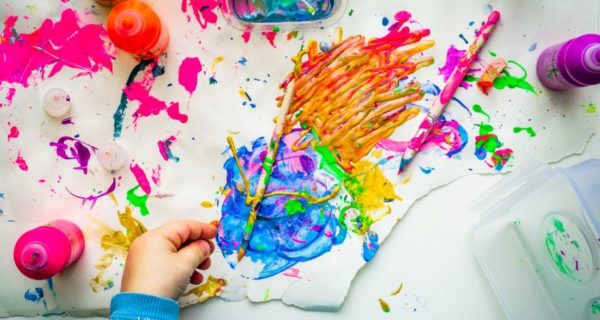“There is one thing stronger than all the armies of the world, and that is an idea whose time has come.” – Victor Hugo
The creativity of man has been a monumental force through the millennia.
A perusal of the greatest works of mankind can stagger the imagination. The paintings of Raphael. The plays of William Shakespeare. The relativity equations of Albert Einstein. The creative ideas of Leonardo Da Vinci. The epic lines in the Iliad of Homer. The chess games of Paul Morphy, Bobby Fischer, Gary Kasparov and Magnus Carlsen. The amazing sculptures of Michelangelo. The haiku poems of Basho. The love sonnets of the Brownings. The enlightened mystical poems of the Upanishadic mystics. Masterful creations like Rodin’s Thinker. Incredible monuments like the Taj Mahal of India, the Great Wall of China and the Pyramids of Egypt. Innovative enterprises like the Ifugao Rice Terraces of the Philippines. The list is endless.
How about things, events or performances which are not easily recognizable as creative, yet pulsating with creative ecstasy in the moments of their creation? The gliding aerial moves of Michael Jordan on his way to the basket, are easily appreciated by adoring fans. So are the perfect moves of an athlete like Nadia Comaneci, as she essays perfection in gymnastics. Many situations have innate creativity in them, born of the inexhaustible wonder of the universe. The ideas of Lao Tzu are creative. They speak with incredible vitality and dynamism. The works of Steve Rune Lundin, author of the Malazan Book of the Fallen, are creative. They burst with archetypal lore. The loving flights of ecstasy traveled by Plotinus when he merges with the Infinite are creative. They are recollections of his mystical rapture with the Oneness of the Supreme Being. All these and many more are products of the amazing, infinite potential of the human mind, body and soul.
The history of mankind is replete with awesome moments like this. When the innate genius present in the genetic structure of an individual combines with the pregnant possibility of a single moment in time to produce a wonderful event, a creative endeavor. Since the dawn of history, creativity has been the primary weapon of the human mind in its attempt to understand, comprehend, systematize, analyze, conquer and ultimately master the natural world. Moments of creativity are evident in the very first hunters of the human race, when the hunter-gatherers in the wilderness fashioned rudimentary tools to arm themselves and improve their hunting expeditions. Moments of creativity are evident in those early communities, when the men and women started to organize themselves into primitive tribes, the precursors of cultures and civilizations. In fact, the primary institution of mankind, marriage and the family, is an act of creativity. It is creative in the sense that man and woman seeks a better and more exalted kind of relationship, a bonding paradigm which will improve the chances of the offspring to survive in the harsh world of nature.
As mankind evolved, creativity became its primary weapon in the pivotal event of civilization building. Creativity is evident in the successful attempt to settle in the great and rich deltas of the world to erect the primordial cultural archetypes that eventually developed to become the cradles of civilization, such as the Tigris-Euphrates, Nile River, and Yellow River civilizations. Creativity is evident in the formulation of the first laws of mankind, such as the Code of Hammurabbi and the Ten Commandments. Creativity is evident in the inception and development of the various languages. Complex languages like Classical Greek and Exegetical Hebrew are testaments to the intelligence of man and his ability to construct amazing philosophical and theological systems. Profound languages like Ancient Sanskrit and Chinese are testaments to the wisdom of man and his ability to convey multiple layers of meaning. Romantic languages French, Spanish and Italian are testaments to the passion of man and his love of life, beauty and truth. Creativity became instrumental in the development of cultures around the world as well as the singular achievements of the great paragons of those cultures, the men and women of creative genius who regaled world history with their incredible personal achievements. Examples of these paragons range from ancients like Leonardo Da Vinci, Shakespeare, Newton, Bacon, Milton, Lao Tzu, Chuang Tzu, Leibniz, Boddhidharma, Alighieri, Longfellow, to creative artists who populated the modern world like Robert Frost, Henry Wadsworth Longfellow, Wilt Chamberlain, Manu Ginobili, James Oliver Rigney, Jr., Frank Herbert, Enya, Sarah Brightman, Michael Whelan, Wesley So, Ramon Fernandez, etc. This is just a sample of masterful creators in various fields.
The astounding period called the Renaissance was an attempt to rekindle the awesome creativity that flourished in the Greek city-states. Mankind had reached a kind of saturation point in the Dark Ages and it was time for a unique renewal. The rediscovery of mankind’s creative heritage in the classical periods of Greece and Rome had incredible implications through the centuries. Renaissance Art was a blossoming phase and a coming-of-age for mankind. It’s a critical phase in the history of mankind that deserves a place, not only in World History and Art classes, but also in Psychology and Sociology classes. Mankind had begun to display creativity in all aspects of life, from painting, to architecture, to engineering and even to the esoteric arts of Wisdom.
The study of creativity enhances man in many ways.
Creative artists, creative scientists and creative mystics have labored long and hard to build the foundations of evolving humanity. This quest, though unrecognized by the common man, is helping inch by inch to catapult the human being to higher and higher levels of consciousness. This is the spiral of life, the Tao of creativity, the spirit of evolution.

